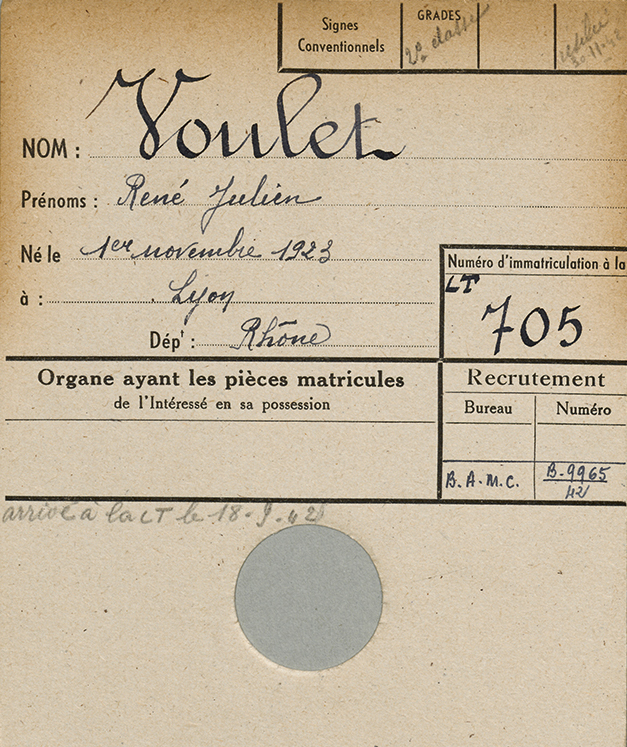The files of the LVF and the Légion tricolore
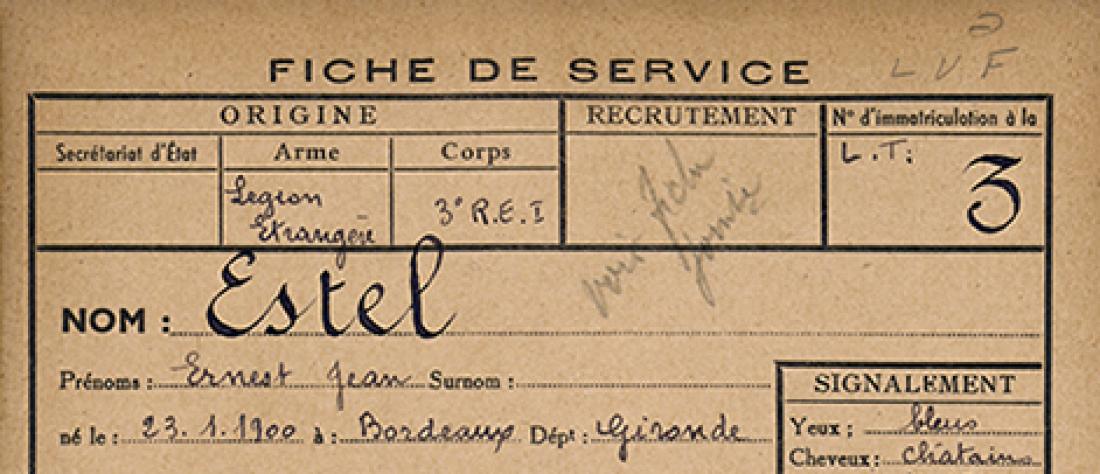
In June 1941, after the launch of Operation Barbarossa (22 June 1941), the collaborationist parties demanded to be part of the ”crusade against Bolshevism” in the USSR. The Légion des volontaires français was created with this goal on 6 July 1941. About 6,000 Frenchmen would fight in German uniform after enlisting in this organisation. The archives of the special services provide a better understanding of how it worked.
Founded in Paris on 6 July 1941 on the initiative of the collaborationist movements, the Légion des volontaires français contre le Bolchevisme (LVF, Legion of French Volunteers against Bolshevism) was an association organising the recruitment of a corps of volunteers to fight in the USSR alongside the Axis forces.
The LVF: a simple infantry regiment
The LVF central committee listed the candidates, each identified by a file number. The first presented themselves at Versailles on 25 August. They were given a registration number on arrival, before the medical examination. In all, some 13,400 were allocated up to August 1944. Although we know that overall fewer than 6,000 candidates were passed as fit, determining the exact number of volunteers registered at Versailles is not easy because a notable proportion presented themselves two or even three times, receiving a different number each time. In all, the corps amounted to one Wehrmacht infantry regiment, IR 638.
On 22 June 1942, the LVF was transformed into the Légion tricolore (LT), an association formed according to the law of 1 July 1901. The goal was to incorporate IR 638 into a wider group to fight both on the Eastern Front and in the French possessions overseas, against Commonwealth and Free French troops. This transformation corresponds to an intervention by the French state. Law no. 704 of 18 July, supplemented by the decree of 16 September, guarantees the advantages granted by the new Legion to its members. In a new arrangement, active army personnel could now sign up, being placed on ”armistice leave” for the purpose. Moreover, their enlistment could take contractual form.
The volunteers of the Légion tricolore assembled in Guéret (Creuse), where they were allocated a registration number separate from the one provided in Versailles. This resulted in a degree of confusion, as many new volunteers continued to come to Versailles without passing via Guéret, and the German military authorities did not consider themselves concerned by the transformation.
The Légion tricolore operation ended in failure. In practice, it served only as a sparse pool of candidates for IR 638. Law no. 1113 of 23 December 1942, promulgated on 17 January 1943, pronounced its dissolution, though the benefits guaranteed to members by the government remained assured. In practice, enlistment to the LT only ended on 16 February 1943, when the Guéret centre temporarily became a military administration bureau (BAM) for the LVF, which was reborn from its ashes. Nearly 1,400 registration numbers were allocated there after July 1942.
The final step was taken with law no. 95 of 11 February 1943, which acknowledged the public usefulness of the LVF. However, although its volunteers were treated similarly to mobilised soldiers, they could not claim the legal status of combatants. On 16 April 1943, the Guéret barracks became the LVF officer training centre (CIC), which moved to Montargis (Loiret) in July. The registration numbers allocated at the BAM and then the CIC continue the same series as those of the LT, the last being close to 2,500. About 1,100 new numbers were allocated between February 1943 and August 1944.
The SHD files
The Service historique de la défense (SHD, Defence Historical Service) has four alphabetical files (see documents 1 to 4), all constituted during the war, enabling for the first time a serious approach to the subject in both statistical and sociological terms. But only an approach, because these files are unfortunately incomplete. In addition, the unreliable information in certain records can cause confusion without an intimate knowledge of the subject.
Two files come from the special services archives:
The first, consisting of a collection of records of various origins, covers volunteers enlisted at Versailles; mostly, though not exclusively, those who were refused following the medical examination. It generally provides the volunteer's personal details, record number and registration number from Versailles (it is not always easy to distinguish between these two numbers).
The second, more standardised, concerns volunteers passed as fit at Versailles, with their registration number and name; this is clearly the least complete file, missing the letters L to Z.
The other two files, concerning both volunteers enlisted in Guéret and then Montargis and those who signed an enlistment contract having passed through Versailles only, were held by the French defence ministry.
One provides primarily the personal details and the registration number allocated in Guéret or Montargis (with no number for volunteers already enrolled in IR 638 or referred directly from Versailles whose enlistment took contractual form).
In the other, four-page service records tally with the previous file, but provide much more comprehensive information.
Éric Lefèvre
Specialist in the military history of the Second World War
and the German occupation
FOR MORE INFORMATION
The LVF files will be classified under sub-series GR 28 P 12.
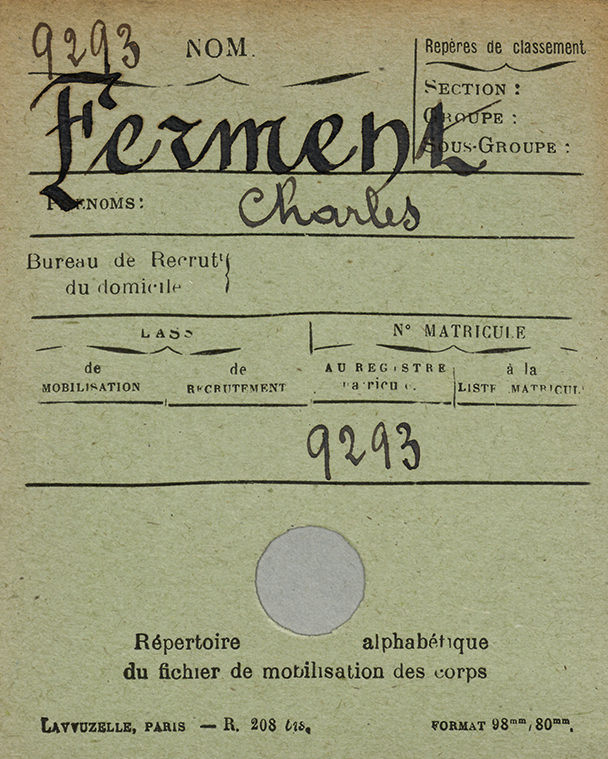
Fiche de Charles Ferment. Fichiers LVF. Recto.
© SHD

Fiche de Charles Ferment. Fichiers LVF. Verso.
© SHD
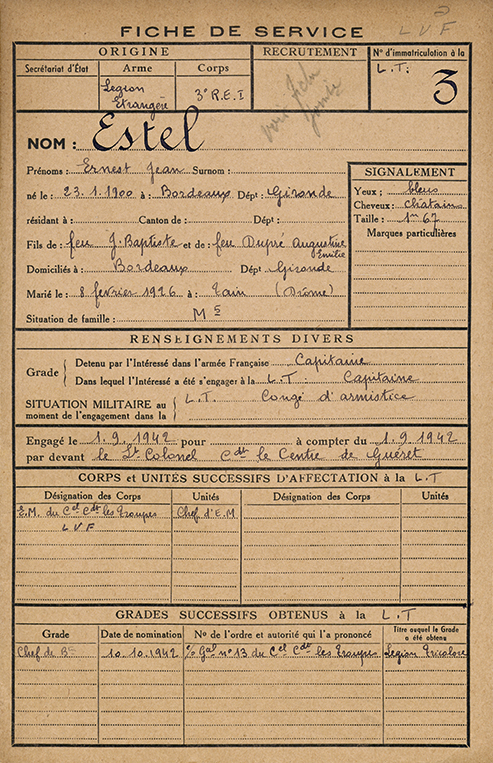
Fiche de Ernest Estel. Fichiers LT.
© SHD
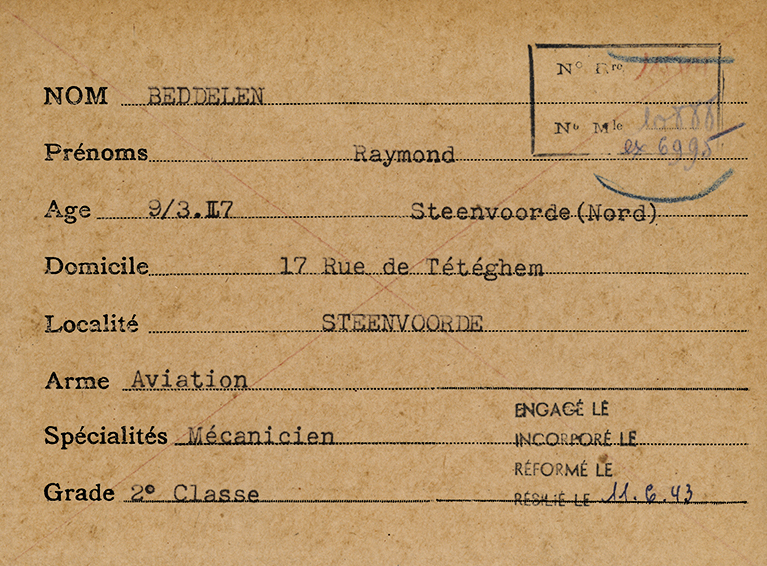
Fiche de Raymond Beddelen. Fichiers LVF.
© SHD
